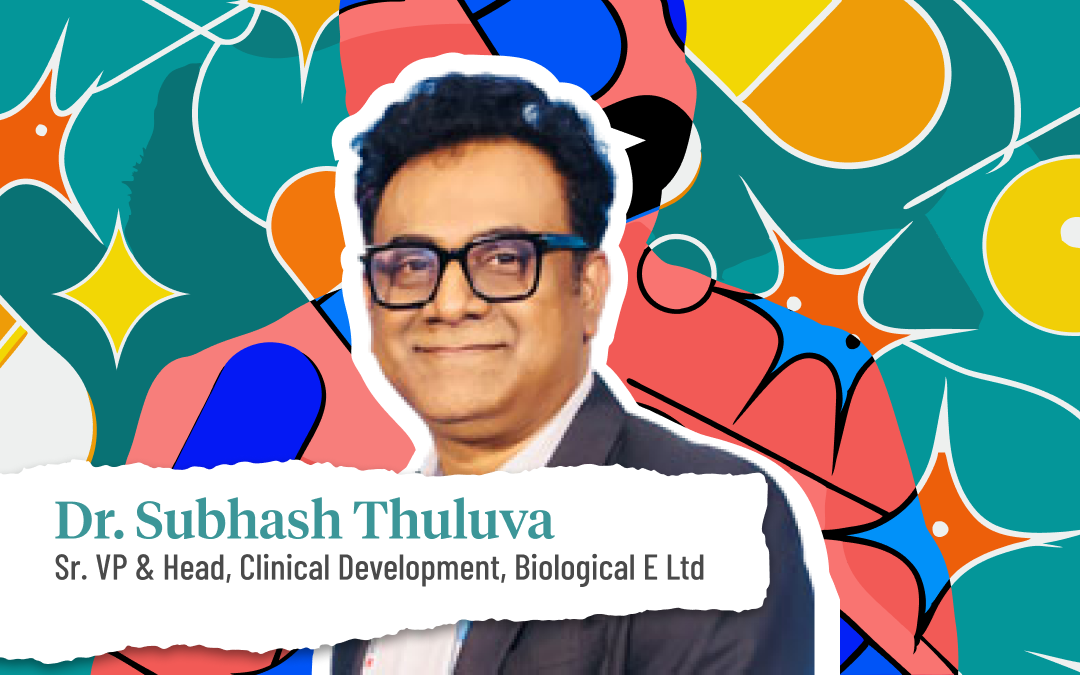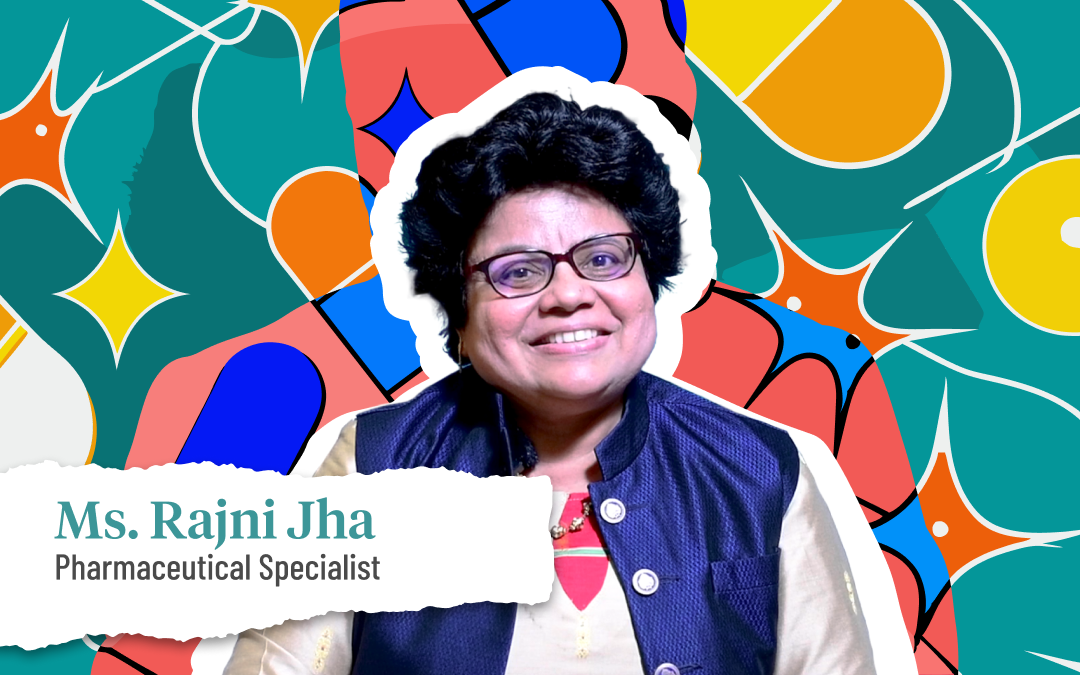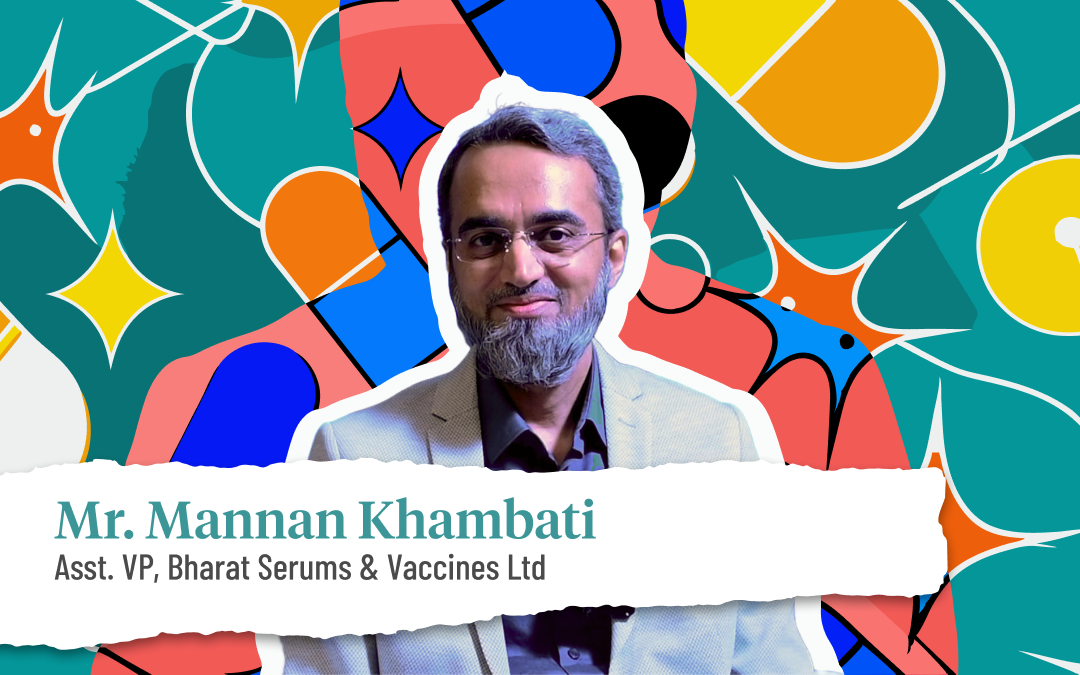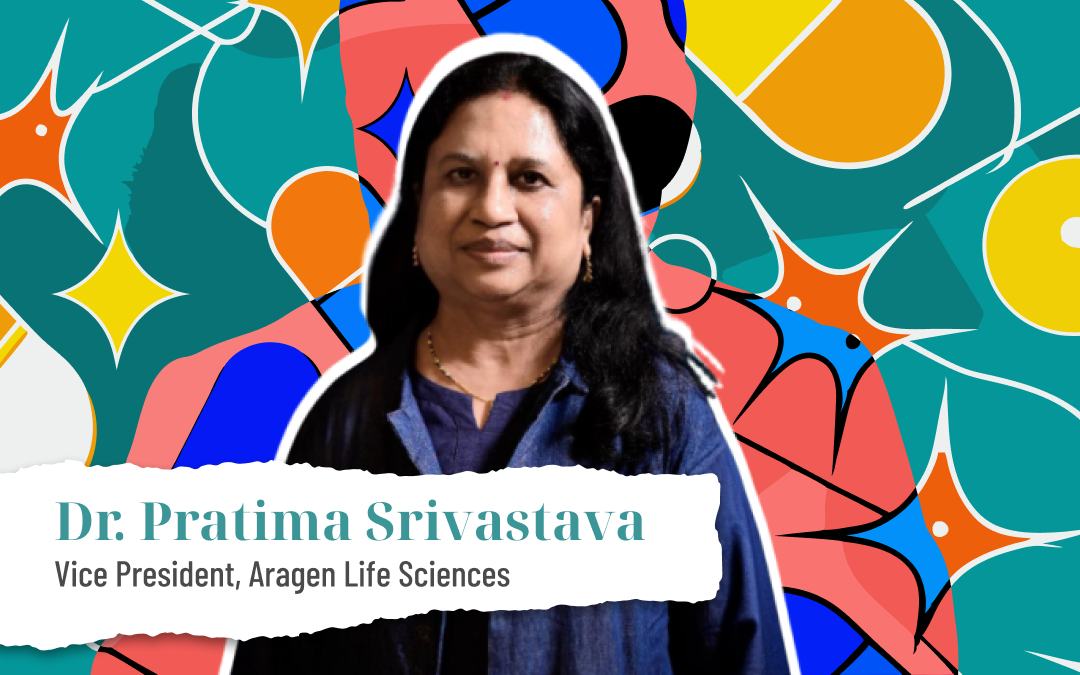QnA
Interview | June 17, 2025
Dr. Vikram Mahapatra is the Director – Sales & Marketing at SaniSure, where he leads commercial strategy, brand positioning, and market expansion for cutting-edge healthcare and hygiene solutions. With a proven track record of driving revenue growth across India’s competitive pharmaceutical and consumer markets, he combines deep domain insight with strategic innovation to build high-impact sales teams. Known for cultivating customer-centric approaches, channel partnerships, and differentiated value propositions, Dr. Mahapatra bridges technical acumen and business leadership to accelerate SaniSure’s mission of delivering quality healthcare and wellness products at scale.
Pharma Now: Welcome to Pharma Now. Today, we have with us a legend who started his journey in Chemical Engineering and has since transitioned across roles—from sales to marketing—and is currently working at SaniSure. Mr. Vikram, welcome to Pharma Now. You have around 30 years of experience in the biopharma sector. We would love to hear about your journey—from the beginning to joining SaniSure. What challenges did you face, and how did the transition from Chemical Engineering to Pharma happen?
Mr. Mahapatra: I never intended to get into pharma. Looking back, I’d say my journey started with companies in the technology space. I was never interested in working fixed shifts in a factory and returning home—it just didn’t excite me. I always wanted to do something new and was fascinated by learning about the latest technologies.
One thing that used to bother me, even as a child, was hearing people say, “India is 40 years behind the United States or any other developed country.” I hated that statement. I’d often say, “If not equal, at least we can bridge the gap in five or ten years.”
India has a strong history in engineering, and I come from the University of Mumbai, which at the time I graduated, was among the top 10 globally. I used to wonder—why can’t we do better?
After graduating, I did my internship at Reliance for three months and another six months at Polyolefins India, which is now part of Reliance. At the time, the plastics industry was emerging rapidly, and many people around me advised that I pursue a career in that space. I was quite inclined towards it too.
Then a job opportunity came along—it was for a filtration company. I had no clue what that meant. The only filtration I knew was making tea! But then I discovered that filtration is everywhere—in medicine, biotech, oil and gas. One of my first exciting projects was in oil and gas at Reliance, where we sold them a catalyst recovery system. These metal filters operated at about 120°C and recovered costly nickel-palladium catalysts. The system cost 6 crores, and they recovered it in just three months, purely through catalyst recycling. That’s when I realized the immense value of filtration.
I started in technical service. My job was to go to customer sites and prove the performance of our products. I would carry bags of sample filters, test them onsite, fail, revise, and try again. We didn’t have mobile phones back then. I stayed close to a PCO or a fax machine, sending problems to our college teams in the UK or US and asking them to fax me back solutions. I’d request the PCO operator to inform the reception as soon as a fax came in. I always carried a bunch of faxes to show customers.
Honestly, if a foreigner told a customer something, they’d believe it instantly. But if an Indian engineer was doing the groundwork and showing proof—it was often ignored. That used to frustrate me.
Pharma Now: I can’t imagine how things worked without mobile phones back then. Today we can’t even take a step without them.
Mr. Mahapatra: Exactly, that's the power of technology. I doubt the younger generation even knows what a pager is. Pagers existed in India for barely six months! My first mobile phone cost ₹26 per minute. My boss would say, “Speak for no more than 30 seconds.” We used to write very crisp and concise messages in faxes to save money.
Access to the internet was a luxury. You had to travel to specific places just to send an email. My boss had a fax machine at home, so I had to fax him updates at 9 p.m., and he’d reply within minutes. That was our daily communication.
Flights were expensive, and everything took more time. But our customers were patient and gave us second, third, even fourth chances. That’s not the case anymore—now you have just one shot. If you fail, you're out.
Technology has evolved. From ₹26 per minute calls to a few paise today, from extremely expensive products to scalable solutions as volumes grew—everything changed. Component sourcing has also become critical. Many companies don’t manufacture everything in-house and rely on external suppliers. This impacts their cost structure and pricing, but these issues will eventually get addressed.
Pharma Now: I believe your next move was to Pall Corporation?
Mr. Mahapatra: Yes, I was already with Pall. I began in technical services, then built validation labs, and later, a stainless steel skid manufacturing unit in Pune. We started with oil and gas systems and eventually transitioned into biopharma. These systems were supplied across Asia.
Later, I moved into marketing and business development. Pall acquired several companies with new technologies, which had to be demonstrated effectively. But no solution is worth its weight in gold if it’s too expensive. It must be cost-effective.
Take, for example, polio vaccines—they’re cheap. So if you propose single-use systems there, it doesn’t make economic sense. But for monoclonal antibodies or anti-cancer products, where a milliliter can cost $1,000 or even $10,000, single-use is the best solution—it saves time and reduces contamination risk.
Pharma Now: Now that you're developing single-use products at SaniSure, could you tell us more about how they’re applied, manufactured, and conceptualized?
Mr. Mahapatra: Sure. Let me share an example—our product called Mix4Sure. It’s a compact container with a bottom-mounted mixer and inlet-outlet connections for additives. You mix, adjust pH, homogenize, and then draw out the final product using a pump.
If you build the same system with stainless steel for 50 liters, it would cost about $100,000. But with our design, you place the container on a platform mixer and you’re done. It’s compact, disposable, and efficient.
We also manufacture powder mixing containers. Mixing powder in plastic bags is difficult, so we designed rigid containers with a vertical mixing profile that ensures complete homogenization. These containers can even be integrated with purification systems—connect a filter, sterilize, recirculate, and at the end, you just clip it off. That’s your final product—no cleaning, no complex SOPs, and minimal regulatory headaches. That’s the beauty of single-use technology.
Pharma Now: From our childhood, we’ve been taught about the 3Rs. Single-use, by its name, seems environmentally unfriendly. How does one address sustainability?
Mr. Mahapatra: Excellent question. Every single-use equipment manufacturer is thinking about this. First comes standardization—to reduce the number of components and sizes. Then, we look at the materials used. We started with glass, moved to stainless steel, then to plastics like autoclavable polypropylene and polycarbonate.
But what about after use? How much resin can we recycle? I’m strongly against disposal—I’m all for recycling. At SaniSure, we’re working closely with resin suppliers on next-generation materials that can be 90% reclaimed after use. It’s expensive right now, but we believe the industry will support it, and we hope to break even in five years.
You have to take that step. Personally, I’m not a big fan of electric vehicles because we haven’t figured out battery recycling yet. We must take responsibility for the sustainability of all technologies.
Pharma Now: Let's return to your personal journey. You mentioned an interest in architecture and design, and you even prepared for MDES. How did that shape your path?
Mr. Mahapatra: Yes, I applied for MDES and got selected among the top 14 out of two lakh applicants. But I was already in my second year of Chemical Engineering. For me, that selection was a personal milestone. I didn’t pursue it, but I’ve always applied my passion for design in my work—engineering efficient, cost-effective solutions for customers.
Pharma Now: That’s remarkable. Many people prefer sticking to one path fearing they’ll become a jack of all trades, master of none. But you’ve clearly mastered multiple fields.
Mr. Mahapatra: I wouldn’t say I’ve mastered them. I’m still learning. But I enjoy the journey and have never been bored. I can't imagine sitting behind a desk all day. And I believe in giving back—to the industry, to our country.
Take the example of Shanta Biotech. When they launched the Hepatitis B vaccine, GSK was selling it at ₹2,500 per dose. Shanta launched theirs at ₹500, GSK dropped to ₹1,250. Shanta went to ₹250. Eventually, they even offered ₹50 per dose if the government added it to the immunization program. GSK exited the market. That’s how India achieved affordable healthcare.
India is a hub for global medical tourism. People from all over the world come here for treatments they can't afford elsewhere.
Pharma Now: Indeed, it’s a great achievement. For new graduates entering pharma or any field, what advice would you give them?
Mr. Mahapatra: Do what you love! Everyone makes money after 40. You will too—if you persevere, learn from mistakes, and correct your course.
You can’t become Elon Musk by 30. Gates wasn’t that rich at 30. He evolved. Apple faced ridicule when they first introduced color graphics.
Follow your interest. Think ahead—what small value can you add? People told me to pursue an MBA. But I asked, what would that do for me? End up in a bank? That wasn’t my path. I wanted to use my engineering and design mindset to solve problems, and I stayed true to that.
So, excel in your chosen field—money will follow. Be honest, be an adviser to your customers, not just a salesperson. Short-term gains with dishonest sales will cost your credibility—and once that’s gone, it’s gone forever.
Pharma Now: That’s beautifully said. It’s not about quantity, it’s about the excellence you bring.
Mr. Mahapatra: Exactly. Passion matters more than anything else. And we must always remember those who helped us along the way. We owe something to them and to our country—something meaningful to leave behind.
Pharma Now: You’ve worn many hats throughout your career — from service engineer to chemical engineer, from business development to sales and marketing, with a strong focus on the technological side as well. Now that you’re deeply involved in sales and marketing, how have your earlier roles shaped what you do today? And how is sales and marketing different in the pharma industry?
Mr. Mahapatra: Sales and marketing, I believe, mean different things to different people depending on what they’re selling. For me, it's about offering a technology-based solution to an existing problem — not just selling a product. In industries like packaging, machinery, product filling, or dosage forms, much of the technology hasn't changed significantly over the years. These are capital goods, and often, the decision is cost-driven, which is completely fair. Every customer wants maximum value from their investment.
But when you're selling a technology product, it has to perform — and more importantly, it has to contribute. That's where the concept of monetizing your product’s result comes in. You must be able to demonstrate that by investing a certain amount, the customer will see a clear payback — an ROI. Earlier, companies spoke of a five-year ROI. That came down to three years. Now, in some cases, customers expect returns within a year. So yes, it all depends on what you're selling and how effectively it performs.
My journey from chemical engineering to technical services, to business development, and then to sales and marketing, has always been rooted in one principle: you succeed when you bring a cost-effective solution to the customer.
Pharma Now: That’s a great point. You mentioned “bringing a solution” to the customer — could you elaborate on what that truly means?
Mr. Mahapatra: Take the mixing platform we’ve introduced. It doesn’t just mix — it stabilizes the product, allows transfer, and even supports storage — all within one system. Traditionally, a customer might make a product in a stainless-steel vessel, then transfer it to glass, then to plastic, and finally to storage. We’ve built a solution that consolidates these steps into one system.
I may sound repetitive when I say this, but cost-effectiveness remains central to everything. No company wants to invest time, energy, and resources into something that doesn’t deliver. That’s why for any technology-based product, demonstration and repeated performance are key. Sales only happen when the product proves itself.
That’s also why I believe in integrating multiple unit processes into a single assembly or technology — it simplifies the system, reduces steps, and saves money. Ultimately, solutions matter more than products. There are many single-use product manufacturers, but only a few succeed in delivering true solutions, like those involved in freezing and thawing technologies.
Imagine this: storing a product for two years, shipping it across continents, and opening it to find it’s still viable. That’s the kind of reliability your technology needs to ensure. And that’s what sets a real solution apart from just another product.
Pharma Now: That’s a very strong example. Stainless steel vessels are expensive and heavy, which is why plastics became preferred — lighter, portable, and you can pack more volume efficiently. That shift alone transformed a lot. But even with that, gaps remain. What else have you learned over the years from industry leaders that shaped this thinking?
Mr. Mahapatra: I remember a conversation with one of my bosses at Paul. He asked me, “What do we make?” I answered, “Filters.” He said, “Wrong.” I said, “Materials?” Again, he said “Wrong.” Then he said, “We make money.”
It was a valuable lesson. Profit is necessary — not for greed, but to fund future innovation. If we’re profitable, we can reinvest in new technologies, new materials, and next-generation solutions. That’s how R&D thrives.
Look at DowDuPont — one of the top companies globally. They’ve researched materials that might not be used for another 200 years. But they’ve done the groundwork so that whenever the need arises, the solutions are ready.
Take the COVID-19 vaccine. Research on similar viruses and platforms had been ongoing long before the pandemic hit. So when the time came, all that was left was scaling up. If that groundwork hadn’t been done, we’d have lost many more years and lives.
Pharma Now: That’s a powerful takeaway — that true innovation starts long before the need arises. So, when selling a product, focusing on features alone won’t help. Speaking to the customer’s pain points and explaining how your solution addresses them is where the real connection lies. From a marketing standpoint, what innovations do you think can enhance how we market these products?
Mr. Mahapatra: The way you present the product to the customer is crucial — and it has to be simplified. Demonstration plays a vital role. You have to stand behind your technology — your words and your credibility matter.
I’ve built that credibility over the years by being honest and consistent. Marketing should be grounded in truth — not just buzzwords. I always focus on F&B — Features and Benefits. A feature means nothing if it doesn’t offer a benefit to the customer.
I also like informal formats. In the U.S., we do “lunch and learn” sessions, where we sponsor lunch and invite people to learn about our products. It’s relaxed, open, and a great setting to share what we do. That, to me, is one of the best ways to market a solution.
Pharma Now: That’s a great insight into customer interaction. But when it comes to brand recall and brand building, digital marketing plays a key role. Whether it's a startup or an established company, how important is digital presence today?
Mr. Mahapatra: The digital space has transformed everything. Earlier, people waited for scheduled programs on TV or specific content. Today, content is available instantly — on your phone, on your tablet — at your convenience. The access has become easy, but the challenge remains the same: content must be relevant.
Whether it’s TV, print, or digital, quality content wins. It’s not just about being the newest thing — it’s about being the most relevant and relatable. If your content doesn’t resonate, you’ll lose attention quickly.
Pharma Now: Very true. People don’t just buy an iPhone for its specs — they buy into the brand, the belief, the promise. It's about how you connect with the product. That defines the buying journey. As we close, what would be one key message you'd like to share with aspiring pharma leaders — or those already in leadership looking to grow further?
Mr. Mahapatra: I’d say: Be focused, be relevant, and be honest. No matter where you are in your journey, these three things matter the most.
There will always be people who come in with flashy ideas or big promises. But unless your message reaches every level of the organization and makes a difference, it won’t work.
Leadership is personal. You’ll hear about Elon Musk, Bill Gates, Warren Buffett — each with different styles. Take inspiration, but find your own voice. Build your own identity — something that you truly believe in. That’s what sets you apart.
And above all — have patience. Success and money will come. After 40, believe me — everyone has money. But what you build before that is what defines who you are.
Pharma Now: That was incredibly insightful, sir. Thank you so much for sharing your experiences and perspectives with us.
Mr. Mahapatra: Thank you. I truly appreciate the opportunity.

FT - Dr. Subhash Thuluva

FT - Ms. Rajni Jha

FT - Mr. Mannan Khambati

FT - Dr. Pratima Srivastava

FT - Dr. Subhash Thuluva
Dr. Subhash Thuluva, Senior VP at Biological E, shares his 25-year journey in clinical development, ...

FT - Ms. Rajni Jha
Ms. Rajni Jha, a seasoned pharmaceutical specialist, shares her journey from the lab to becoming a l...

FT - Mr. Mannan Khambati
Mr. Mannan Khambati, AVP of Biotech Manufacturing at Bharat Serums and Vaccines, shares his inspirin...

FT - Dr. Pratima Srivastava
Dr. Pratima Srivastava, Vice President at Aragen, shares her remarkable journey from aspiring scient...